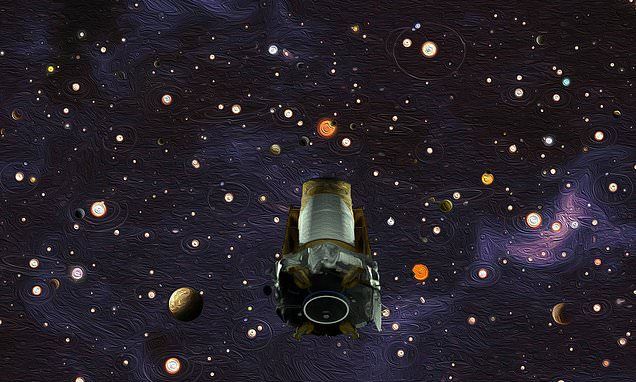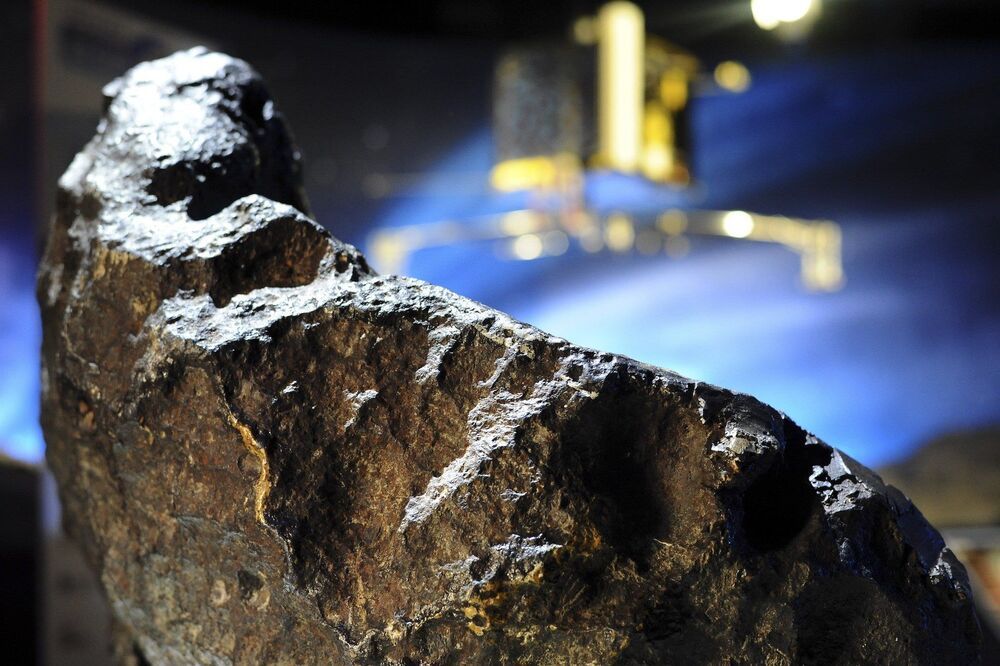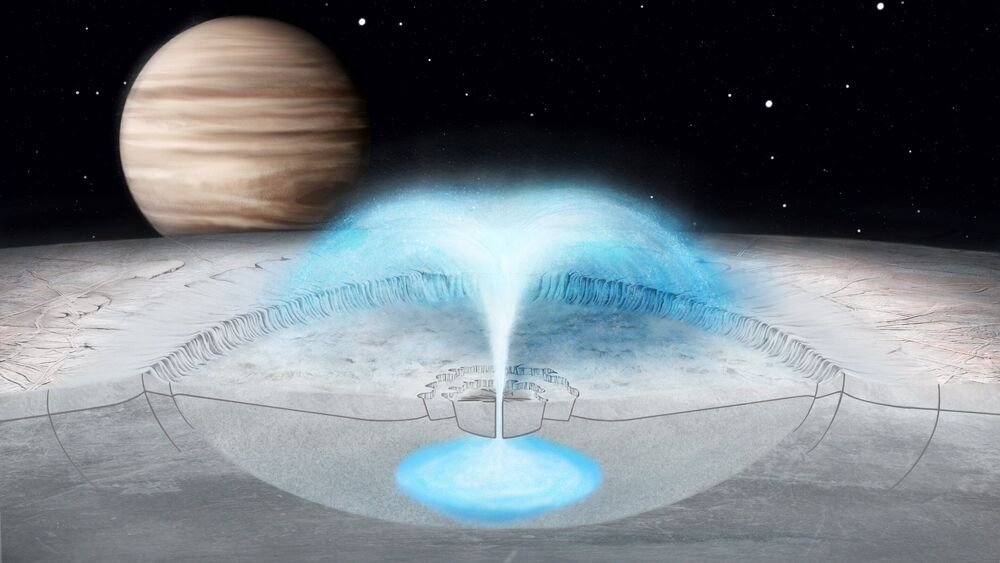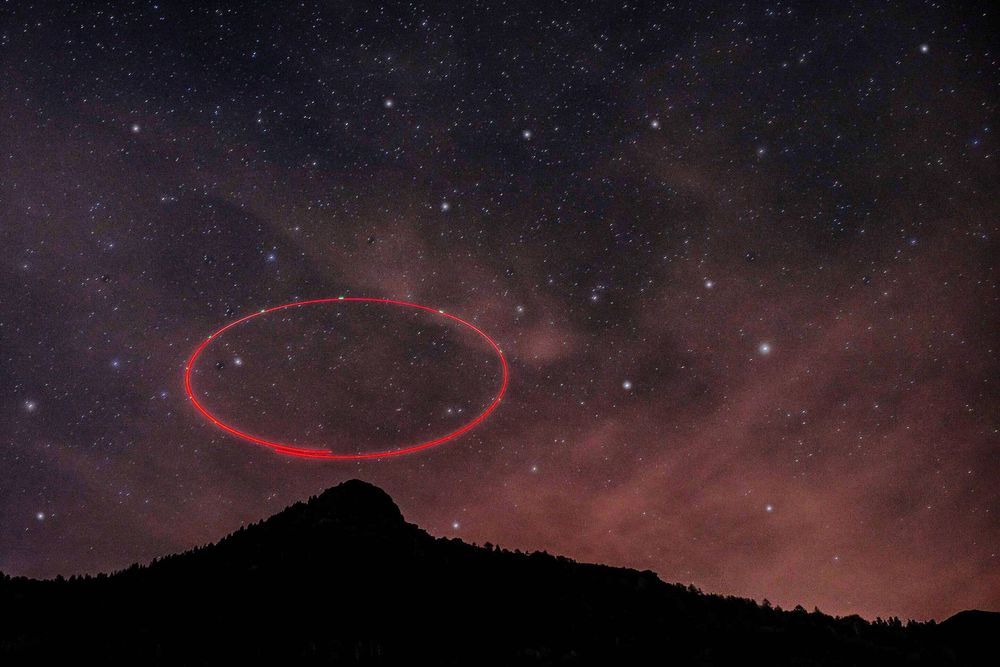Archive for the ‘alien life’ category: Page 89
Nov 16, 2020
The building blocks of life can form even without stars or planets, scientists say
Posted by Raphael Ramos in categories: alien life, chemistry
Interesting.
The building blocks of life can form even before there are stars or planets, a team of researchers have found in a study.
The new research looked at “dark chemistry”, or the ways that new kinds of materials can form without energetic radiation.
Nov 13, 2020
Giant Arecibo SETI Telescope Could Collapse After Mysterious Damage
Posted by Quinn Sena in category: alien life
The cause of the crashes remain unclear. The Arecibo Observatory was built in the 1960s and has been in used for decades to search for extraterrestrial civilizations. Experts are worried cables could corrode further as they age.
The radio telescope, among the world’s largest single-dish radio telescopes, is now in a sorry state — and at risk of total collapse.
“For me, it’s probably fifty-fifty,” former observatory director Michael Nolan from the University of Arizona told National Geographic. “They are doing what can be done. I’m still really worried that they can’t do enough.”
Nov 10, 2020
Researchers model source of eruption on Jupiter’s moon Europa
Posted by Genevieve Klien in category: alien life
On Jupiter’s icy moon Europa, powerful eruptions may spew into space, raising questions among hopeful astrobiologists on Earth: What would blast out from miles-high plumes? Could they contain signs of extraterrestrial life? And where in Europa would they originate? A new explanation now points to a source closer to the frozen surface than might be expected.
Rather than originating from deep within Europa’s oceans, some eruptions may originate from water pockets embedded in the icy shell itself, according to new evidence from researchers at Stanford University, the University of Arizona, the University of Texas and NASA’s Jet Propulsion Laboratory.
Using images collected by the NASA spacecraft Galileo, the researchers developed a model to explain how a combination of freezing and pressurization could lead to a cryovolcanic eruption, or a burst of water. The results, published Nov. 10 in Geophysical Research Letters, have implications for the habitability of Europa’s underlying ocean—and may explain eruptions on other icy bodies in the solar system.
Nov 9, 2020
Milky Way holds at least 300 MILLION habitable planets, NASA claims
Posted by Quinn Sena in category: alien life

There are around 300 million planets that exist outside our Solar System but within the Milky Way which could potentially harbour life. According to research from NASA, four of them are within just 30 light-years from Earth, with the closest just 20 light-years away, NASA claims.
They went in search of the Holy grail of astronomical research, scouring for the ‘Goldilock’s Zone’ where life may thrive.
Continue reading “Milky Way holds at least 300 MILLION habitable planets, NASA claims” »
Nov 7, 2020
New Research: Closest Exoplanet to Earth Could Host Life
Posted by Quinn Sena in category: alien life
But there’s some bad news: Proxima Centauri tends to bombard any planets in its vicinity with a ferocious amount of X rays — Proxima b receives about 400 times the amount as Earth receives from its Sun.
That leads to the question: “Is there an atmosphere that protects the planet from these deadly rays?” asked co-author Christophe Lovis, a researcher who worked on ESPRESSO, in the statement. Lovis hopes that the next generation of spectrographs — ESPRESSO’s successor, “RISTRETTO,” is already in the works — could help us find the answer.
For us to get a closer look at Proxima b however, Proxima Centauri is “only” 4.2 light-years from the Sun — meaning it would still take several thousand years to get there using today’s propulsion technology.
Nov 7, 2020
Gold inflatable house for Mars designed by Hugh Broughton Architects and Pearce+
Posted by Christopher Field in categories: alien life, habitats
“On Mars, it would occupy one of the maze of lava tubes which run beneath the Martian surface,” the architects explained.
Hugh Broughton Architects and Pearce+ are creating Martian House, an inflatable building in Bristol, England, that will explore what an extraterrestrial house for life on Mars could look like.
The house, a collaboration with local artists as part of the ongoing art project Building a Martian House, is set over two levels, with the lower level designed to be built below the ground of the red planet.
Nov 5, 2020
Making the First Martians: Living on the Red Planet
Posted by Lola Heavey in categories: alien life, habitats, sustainability

https://youtube.com/watch?v=HpXvQaQ9ktc
There are many options for living on Mars. 3D-printed ice habitats around the poles, building underground, etc. The technology is finally here.
This is part of the reason why the surface is so cold, ranging from −143 in the polar regions during winter and 35 °C (−226 to 95 °F) near the equator during midday in the summer. But because the air is so thin, a person standing on Mars (in the summer and at noon) would experience extreme cold anywhere above their ankles.
Continue reading “Making the First Martians: Living on the Red Planet” »
Oct 31, 2020
Citizen astronomers reshape asteroids from their backyard
Posted by Quinn Sena in category: alien life
There are nearly one million catalogued asteroids, but we don’t know much about many of them. Now Unistellar and its scientific partner, the SETI Institute, can count on a network of nearly 3,000 amateurs capable of observing thousands of asteroids and providing an estimate of their size and shape. With mobile stations located in Asia, North America and Europe, the Unistellar network, the largest network of citizen astronomers, participates in cutting-edge research and has delivered its first scientific results including the 3D shape model of an asteroid and the size of another one.
“The Unistellar eVscope is more than a telescope. It’s also a tool to access a network made of citizen astronomers throughout the world who can observe together and participate in scientific campaigns,” said Franck Marchis, senior planetary astronomer at the SETI Institute and Chief Scientific Officer at Unistellar. “Today more than 150 people have already contributed to our campaigns and collected valuable scientific data from their backyard.”
In addition to the SETI Institute, Marchis’ group collaborated with Josef Hanuš and Josef Ďurech of the Institute of Astronomy at Charles University to identify potential targets of interest in the asteroid population. “After having designed and validated our data analysis pipeline in 2020, we can now routinely propose campaigns to our citizen astronomers,” said Marchis.
Oct 30, 2020
Using game-theory to look for extraterrestrial intelligence
Posted by Saúl Morales Rodriguéz in category: alien life
Astronomer Eamonn Kerins with the University of Manchester has developed an approach to looking for intelligent extraterrestrial beings on other planets that involves using game theory. He has written a paper describing his ideas and has uploaded it to the arXiv preprint server.
The current approach to looking for intelligent life on other planets is basically two-pronged. One approach involves scanning the skies looking for signals from space that could be created by intelligent beings. The other involves scanning the sky for evidence of exoplanets that appear to be habitable. Kerins suggests that a way to meld the two approaches into a logical systematic search for extraterrestrial intelligence is to use some of the logic inherent in game theory.
Kerins starts by noting that it seems possible that the reason scientists on Earth have not discovered signals from beings on other planets is because they are not sending any, fearing that doing so might draw the attention of unfriendly adversaries. He further suggests that if others are out there, they might be listening just as intently as we are. This leads to the SETI paradox, in which everyone is listening but no one is sending. And it also leads to the question of how such a paradox could be resolved. He notes that game theory suggests that both parties should agree that the party with more access to information should be the one that transmits first to the other.















